3. The Mystery of the Other Forbidden Fruit
The misidentification of 'strawberries' has bedevilled appreciation of one of the Garden's most delicious secrets.
All credit to him, the fabulous Professor Leo Koerner of Harvard pointed out a decade and a half ago that the strawberries in the painting weren’t what we know as Wimbledon strawberries but were actually madronhos – and known to be so by the painting’s first Spanish enthusiast, Fra José Sigüenza (he actually named it The Madronho Painting).
But the correct identification is only one-third of the story.
Madronhos may have a bearing on the entire spirit infusing the Garden.
First, we must know the berries are the base ingredient of one of the world’s most powerful liquors. It is an Iberian aguardente or fire water that in its kitchen garden variety goes up to 70 per cent, maybe more.
It is one of the drinking world’s secrets. In Portugal (where it is spelt with an e) Medronho is even now distilled in roadside garages, woodland hovels, travellers’ camps – and is still consumed by working people in the countryside.
Not tequila, not absinthe, not the Three Lizard Liquor of Vietnam is more potent. Forty years ago, many villages had a Medronho Man at the cross roads directing non-existent traffic. That’s how powerful it is.
And in vignettes in the centre panel – here and there, by no means everywhere – we see signs of craving for and addiction to madronho, of desperate individuals and groups, focussed on a fix.
Here below we have something like an AA meeting in reverse. Twenty or thirty devotees are gathered together to worship the source of their longing.
And there’s more. Look how the birds – the significant birds – are involved with the distribution of the product.
A bird tantalises the upturned chick-like faces with a round, red berry that is, by this theory, a madronho. The men are helpless, pathetic, dependent, begging for supply; longing for a taste of the transporting substance.
If you find this far-fetched, try Wilhelm Fraenger’s 1947 take on it: the men
‘are trembling in fear of getting old and falling a prey to senility. For this trouble, the jay has a mendicament in its beak, an acorn, the guarantee of permanent regeneration, which makes their anxiety superfluous.’
An acorn? Is an acorn a guarantee of permanent regeneration? Is an acorn round? Is it red? Is the critic seeing straight?
The idea of substance dependence puts a different cast on this vignette, below.
Many theories have been spun around it. It’s now possible to think the duck is providing a restorative ‘hair of the dog’ to a hangover victim (it’s no less implausible than other theories).
This dangling black berry isn’t a madronho, clearly, but the same dynamic is taking place. The bird, the berry, the desperate, craving humans. Any berries produce an aguardente. The outcome will probably be very much the same.
As a coda to this bird/berry relationship, here below is a man in a suplicant or submissive position presenting a bird with a madronho, perhaps as an offering. The bird is not impressed. By its expression, it is furious. ‘What do you take me for? You think that’s how it works? We control the supply. You don’t offer me, I offer you! Moron!’
How come birds know so much about it?
Oh, they have an ancestral relationship.
Madronho berries don’t always drop when they ripen and over-ripen. They can ferment on the tree. They produce alcohol. Birds (and bears, oddly, see the bear in the left hand panel) eat the over-ripe, fermenting berries and get tipsy.
It seems that birds, rather than Noah (who is also knocking about the centre panel) discovered alcohol.
So, there is a pleasant theoretical and practical fit to support the idea that the round, red berries in the Garden are alcoholic madronhos. And that as such, they are having an effect on the characters in the centre panel – and on the themes Bosch is working with.
A possible conclusion:
The berries may not necessarily be, as Fra José Suigüenza suggested 400 years ago, a symbol of the evanescence of life’s fleeting pleasures.
They may be a sharp, practical comment on the other demands of the flesh: humanity’s deep need for intoxication.
The deadly sin of the centre panel may be more to do with intoxication and addiction than lust.
PS:
Surely Fra José knew about the intoxicating capabilities of the liquor madronho? That must be possible, even probable? We will never know for sure. But the priest was a man of the Palace. Madronho is a drink of working people in the fields. It is equally likely that a man of his standing never tasted Madronho – in the same way that professors of art history have probably never drunk Tennents Special Brew.
PPS:
Scholars have agreed to agree about what Pliny meant when he called the berry Arbutus Unedo. They say the fruit is so uninteresting that Pliny could only eat one (unum+edo). What’s the betting that Bosch scholars have never eaten a madronho berry themselves? My friend Albano, the sometime mayor of Medelim in the Beira Baixa has a medronho tree in his orchard (it is spelt with a e in Portugal) and he describes the flesh of the ripe fruit as delicious and sweet. Maybe Pliny had to limit himself to one or he’d eat a basketful. It’s as possible as anything else.
PPPS:
Bosch clearly knew the difference between strawberry and strawberry. In the Cavalcade he has hung two side-by-side on a unicorn’s horn. One is distinctly Wimbledon, the other distinctly globular. There are no other distinctly Wimbledon strawberries in the centre panel.
In the next post . . .
On Friday, we’ll go into the consequences of Madronho liquor, and its dulling, life-suppressing after-effects. Then we’ll have to deal with the whole question of lust, because liquor and lust ultimately have a powerfully inverse relationship.
Next post: They say the centre panel is all about Lust. We’ll take a closer look and see whether or not the conventional wisdom is unassailable.



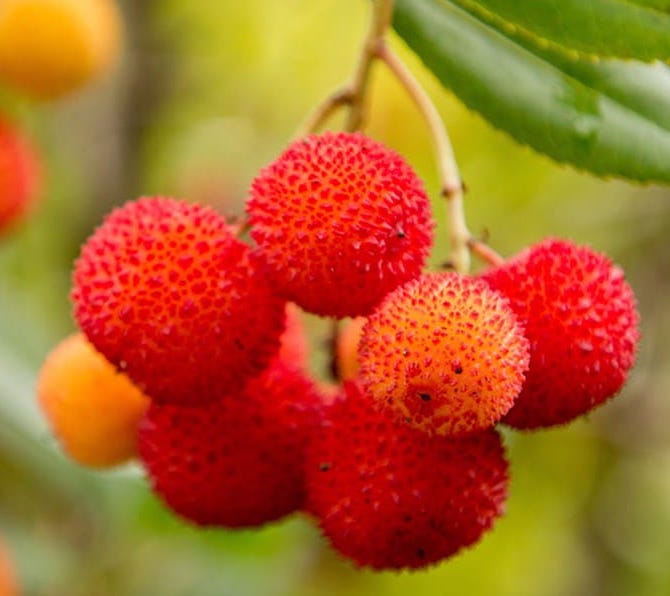
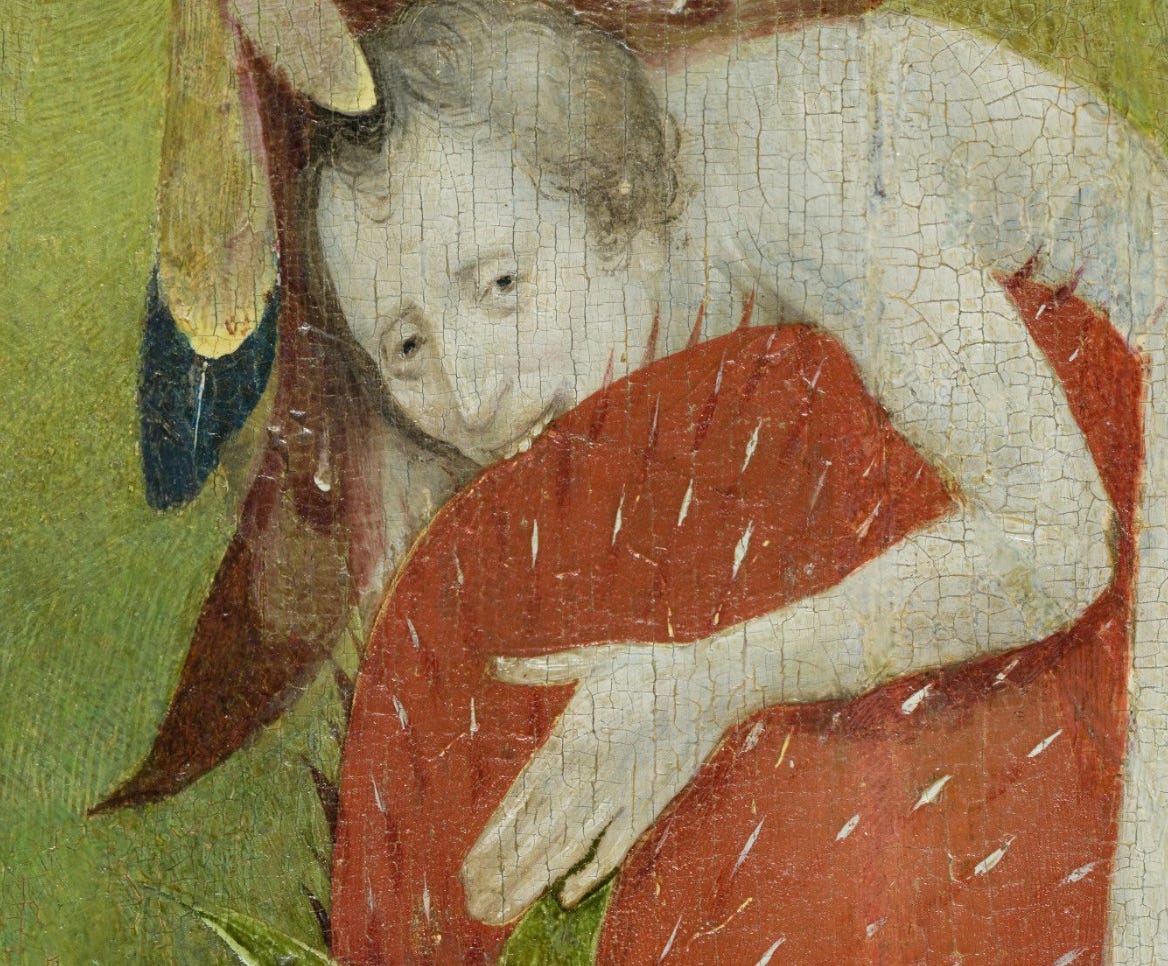
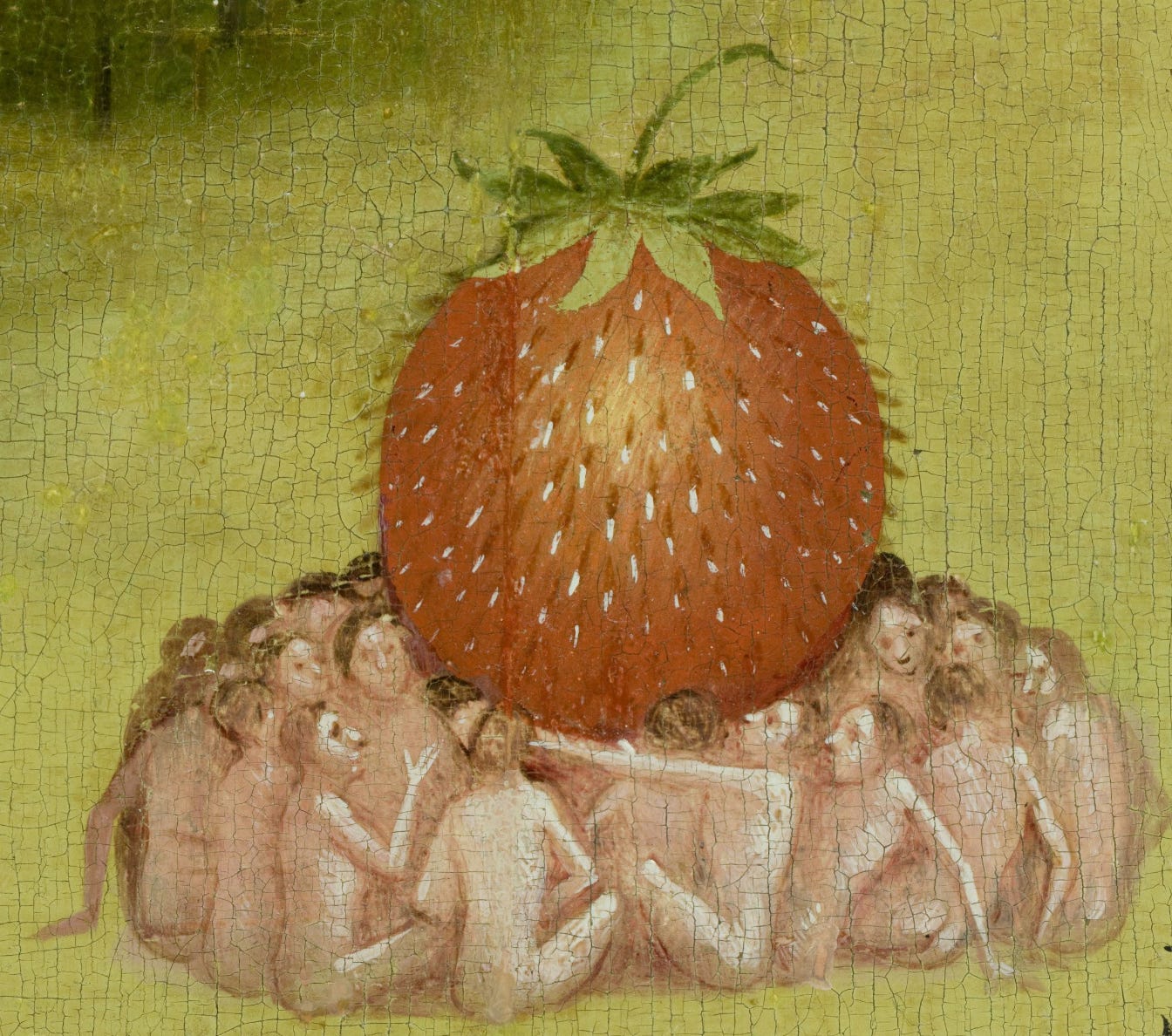
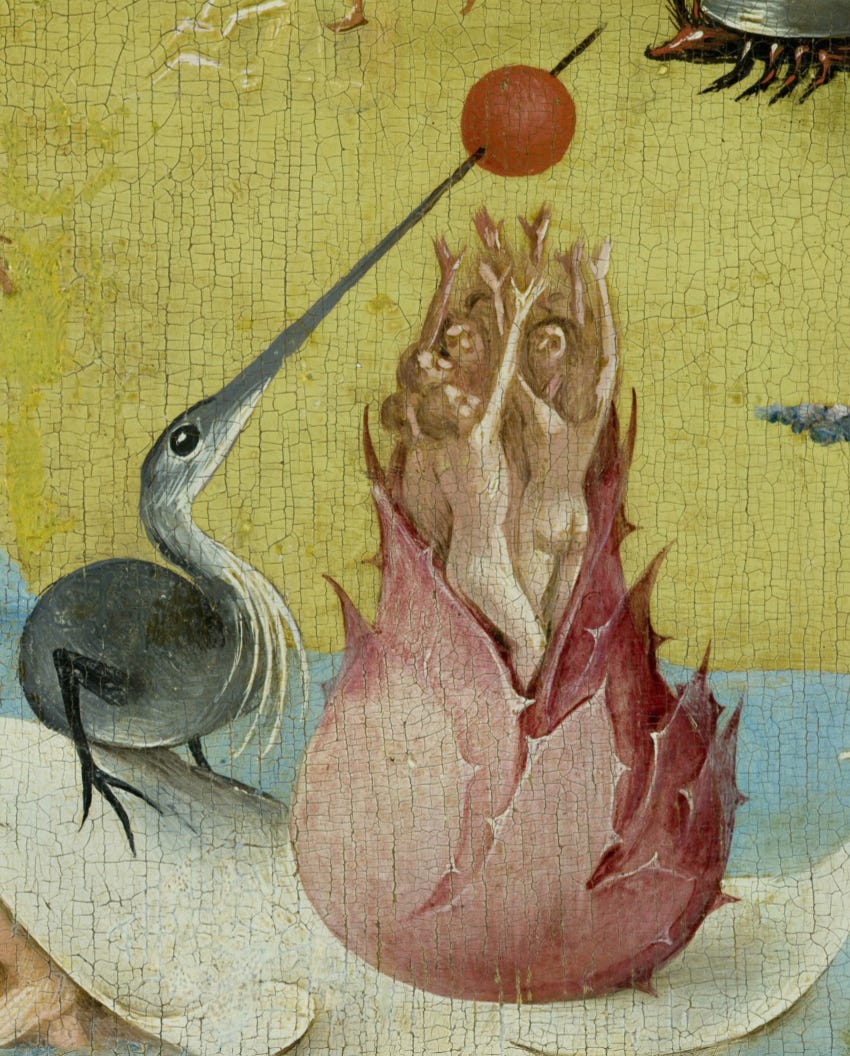
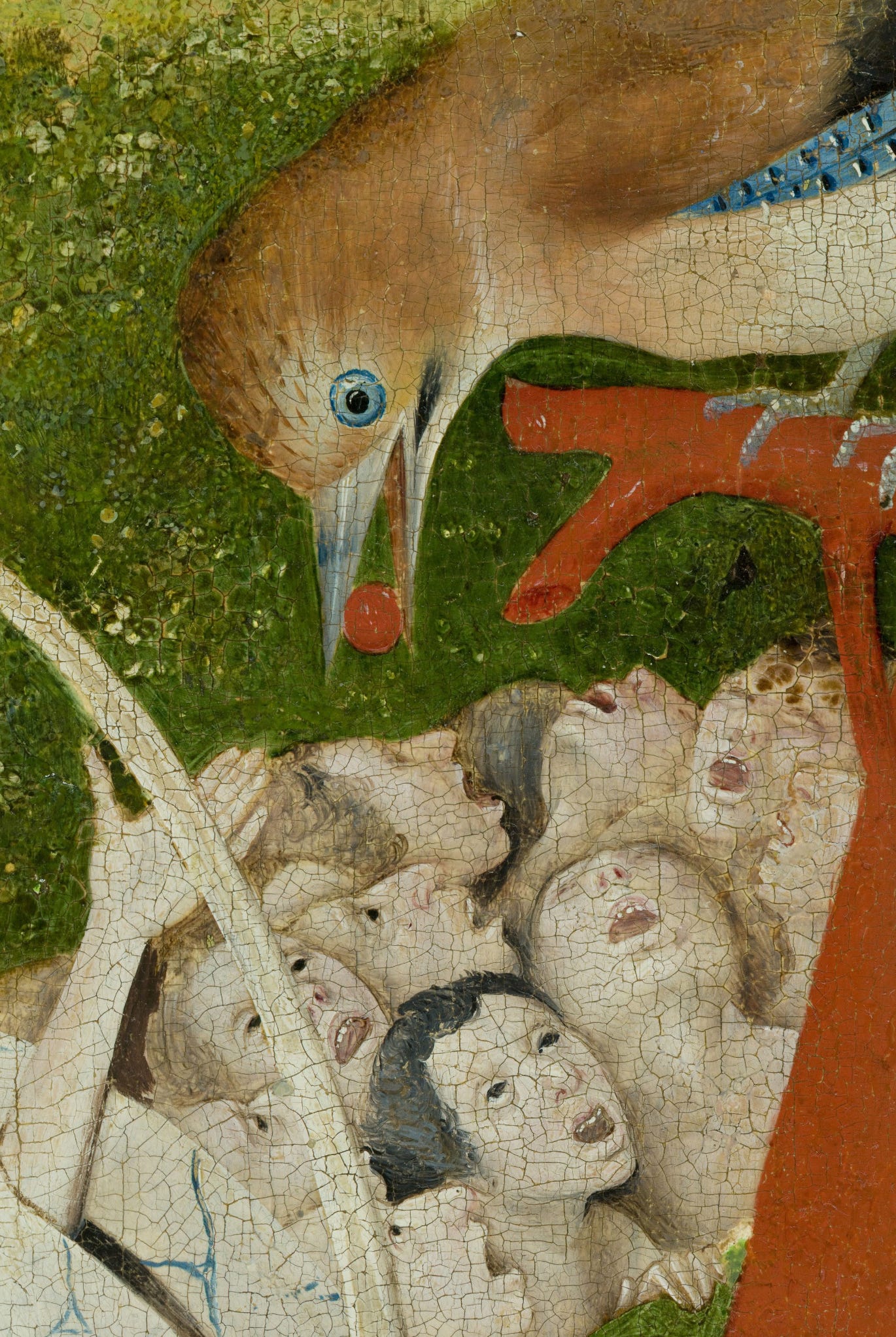

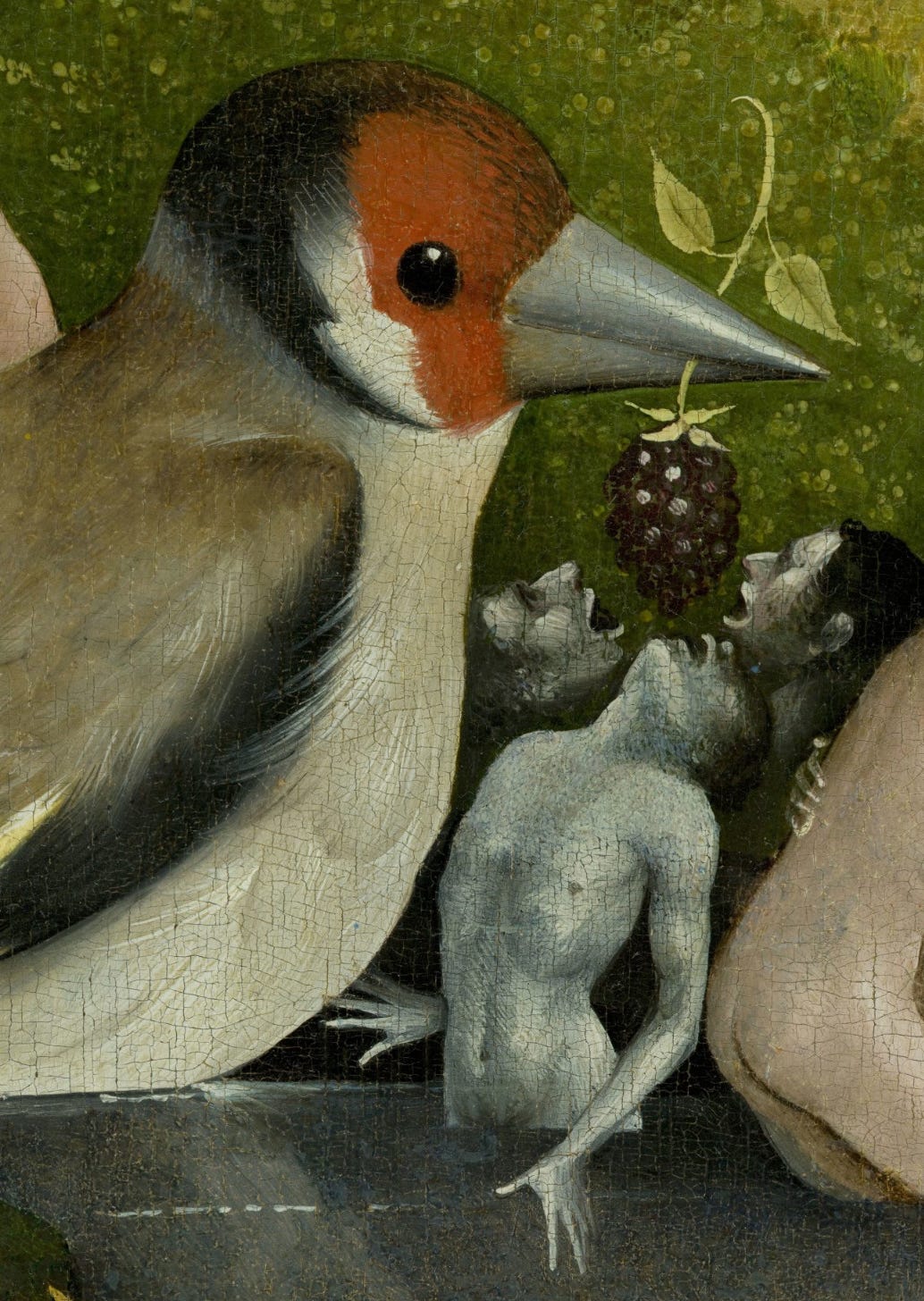
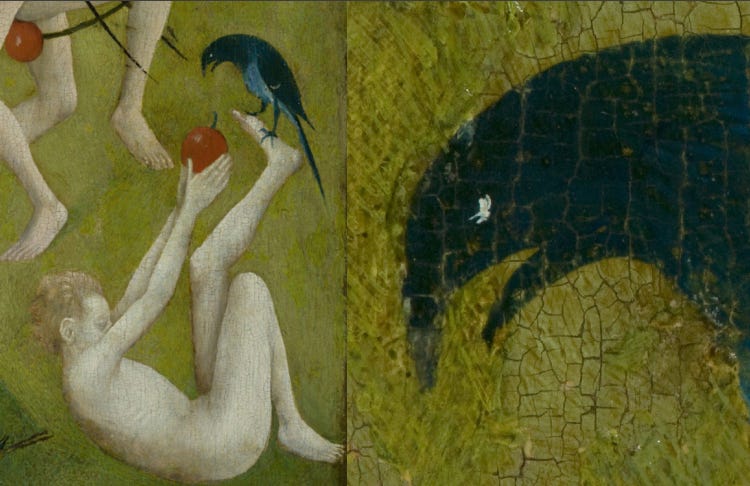
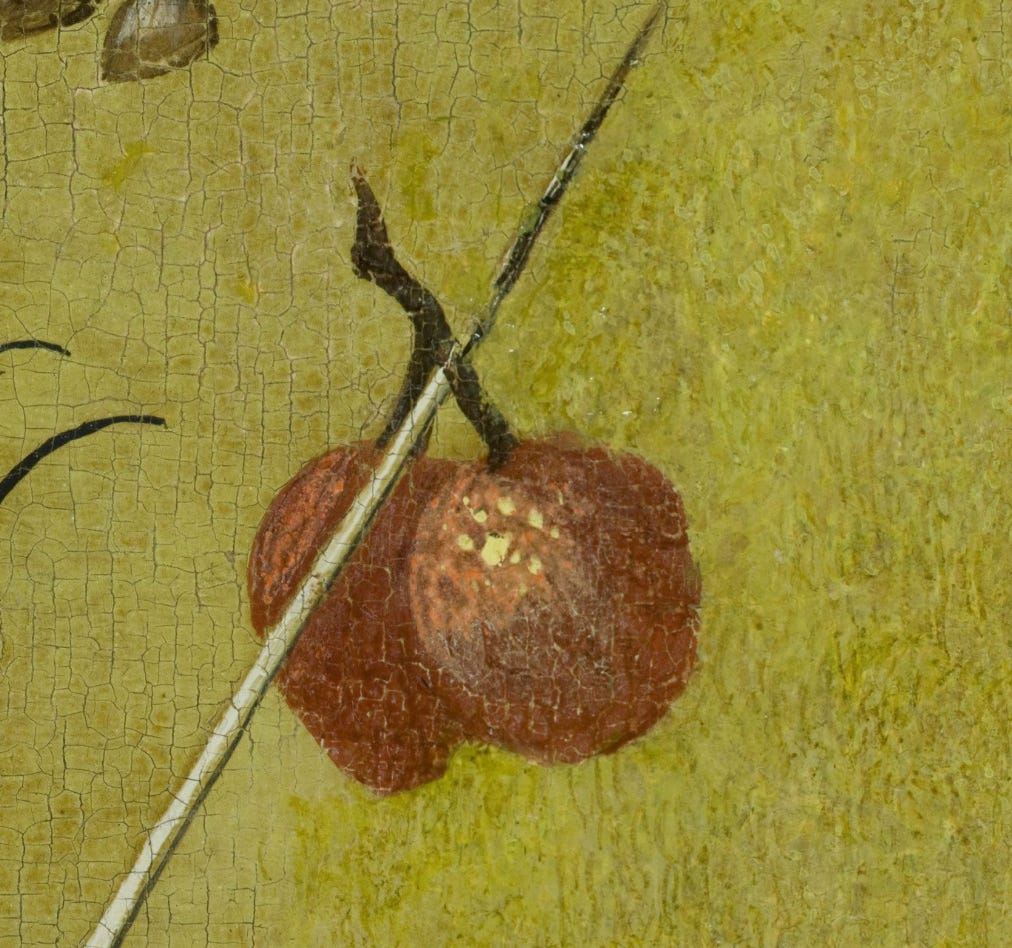
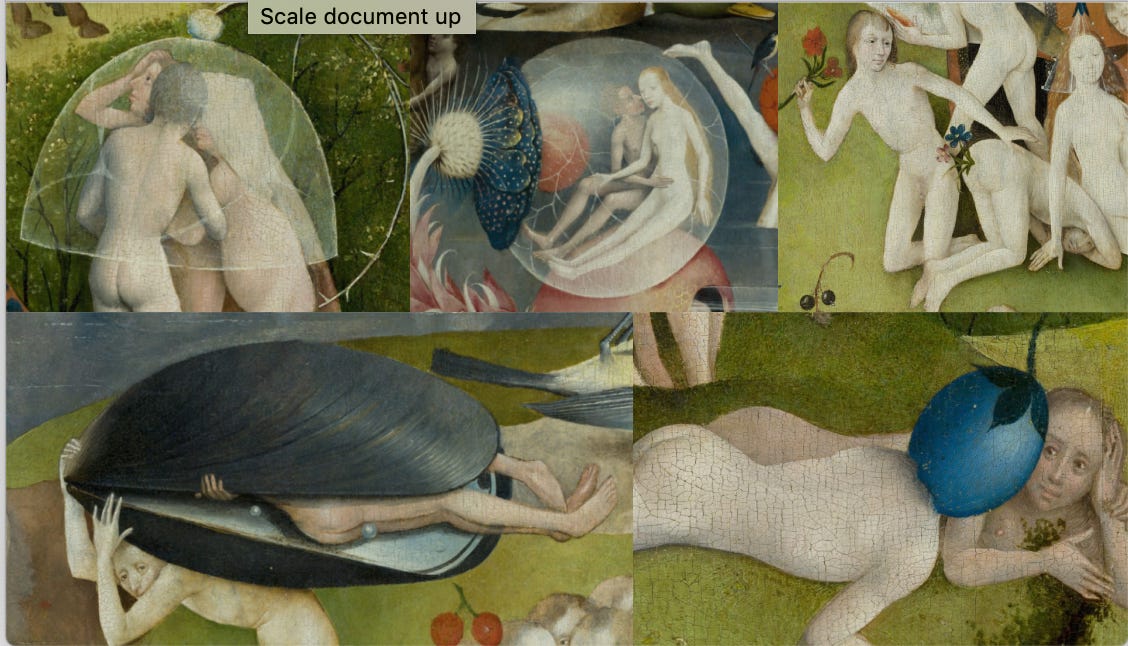
Wow! Who knew! Not even JLK!